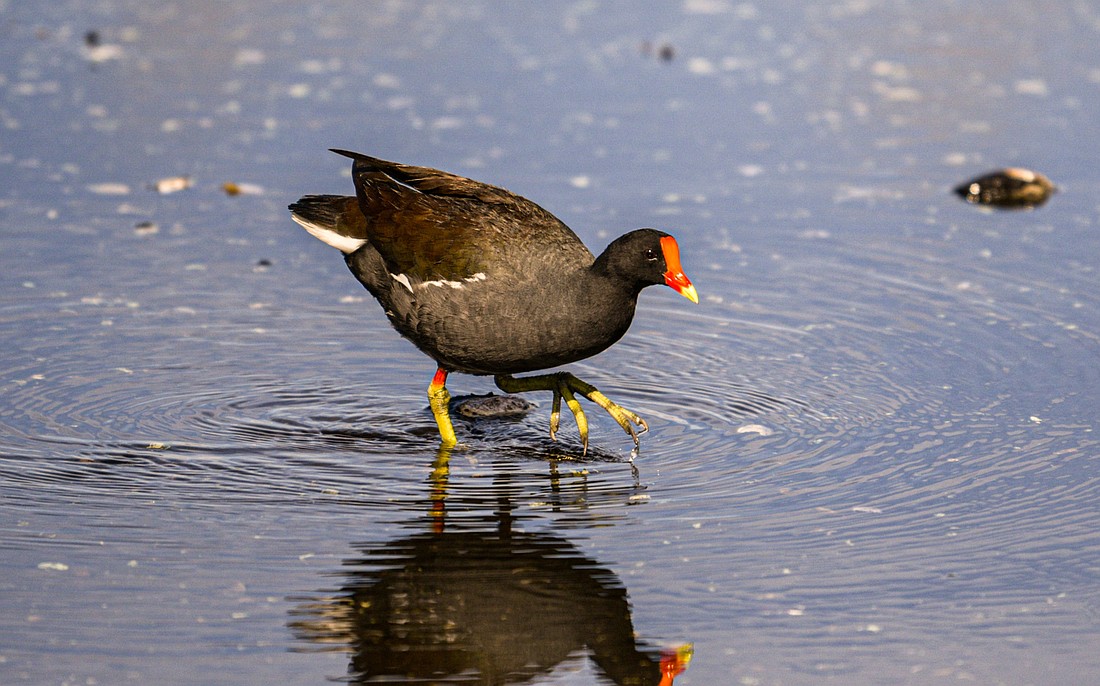- December 4, 2025
-
-
Loading

Loading

As suggested by their name, these small waterbirds, with their unique red bill shields, yellow-tipped beaks and very large feet, are widespread throughout Florida. Though their numbers have declined because of diminished wetlands, you'll still find (and hear) them in marshy areas with open water and a mix of submerged, floating, and tall vegetation. Common gallinules are more vocal during breeding season (April–June), so now is a great time to listen for their distinct clucks, cackles and squawks.
Gallinule feet aren't webbed like ducks, but they still swim quite well. And those long yellow toes come in handy for grabbing tall reeds, allowing them to climb and move about like acrobats above the water. As their toes distribute their weight like snowshoes, they can lightly walk across soft mud, and gracefully traverse lily pads and other floating marsh vegetation. Newly hatched chicks, not as steady on their very large feet, have spurs on their wings that help them climb into the nest or grab onto vegetation.
This species' name has changed many times over the years. They were formerly considered to belong to the same species as the common moorhen, which is widespread in the Old World. However, as vocalizations differ substantially between Old World and New World species, and there are obvious physical differences in the birds' red frontal shields, ithe American Ornithologists’ Union in 2011 voted to change the English name of the species back to a name that had been in use in this hemisphere for many decades.
Save our Seabirds is a non-profit organization whose mission is to rescue and rehabilitate
sick and injured birds, releasing as many as they can, while educating our community about
avoiding injuries and preserving habitats.